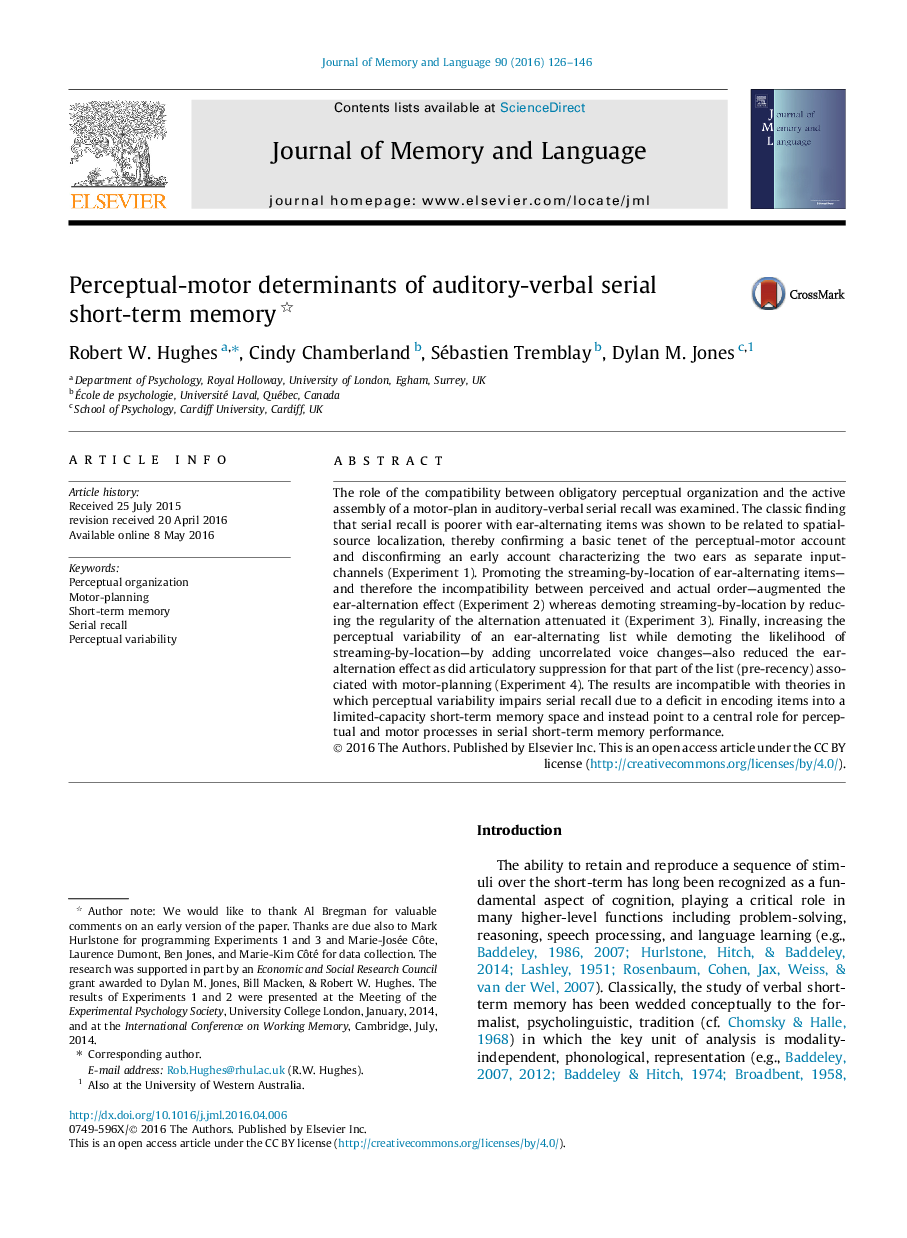| Article ID | Journal | Published Year | Pages | File Type |
|---|---|---|---|---|
| 7296898 | Journal of Memory and Language | 2016 | 21 Pages |
Abstract
The role of the compatibility between obligatory perceptual organization and the active assembly of a motor-plan in auditory-verbal serial recall was examined. The classic finding that serial recall is poorer with ear-alternating items was shown to be related to spatial-source localization, thereby confirming a basic tenet of the perceptual-motor account and disconfirming an early account characterizing the two ears as separate input-channels (Experiment 1). Promoting the streaming-by-location of ear-alternating items-and therefore the incompatibility between perceived and actual order-augmented the ear-alternation effect (Experiment 2) whereas demoting streaming-by-location by reducing the regularity of the alternation attenuated it (Experiment 3). Finally, increasing the perceptual variability of an ear-alternating list while demoting the likelihood of streaming-by-location-by adding uncorrelated voice changes-also reduced the ear-alternation effect as did articulatory suppression for that part of the list (pre-recency) associated with motor-planning (Experiment 4). The results are incompatible with theories in which perceptual variability impairs serial recall due to a deficit in encoding items into a limited-capacity short-term memory space and instead point to a central role for perceptual and motor processes in serial short-term memory performance.
Related Topics
Life Sciences
Neuroscience
Cognitive Neuroscience
Authors
Robert W. Hughes, Cindy Chamberland, Sébastien Tremblay, Dylan M. Jones,
